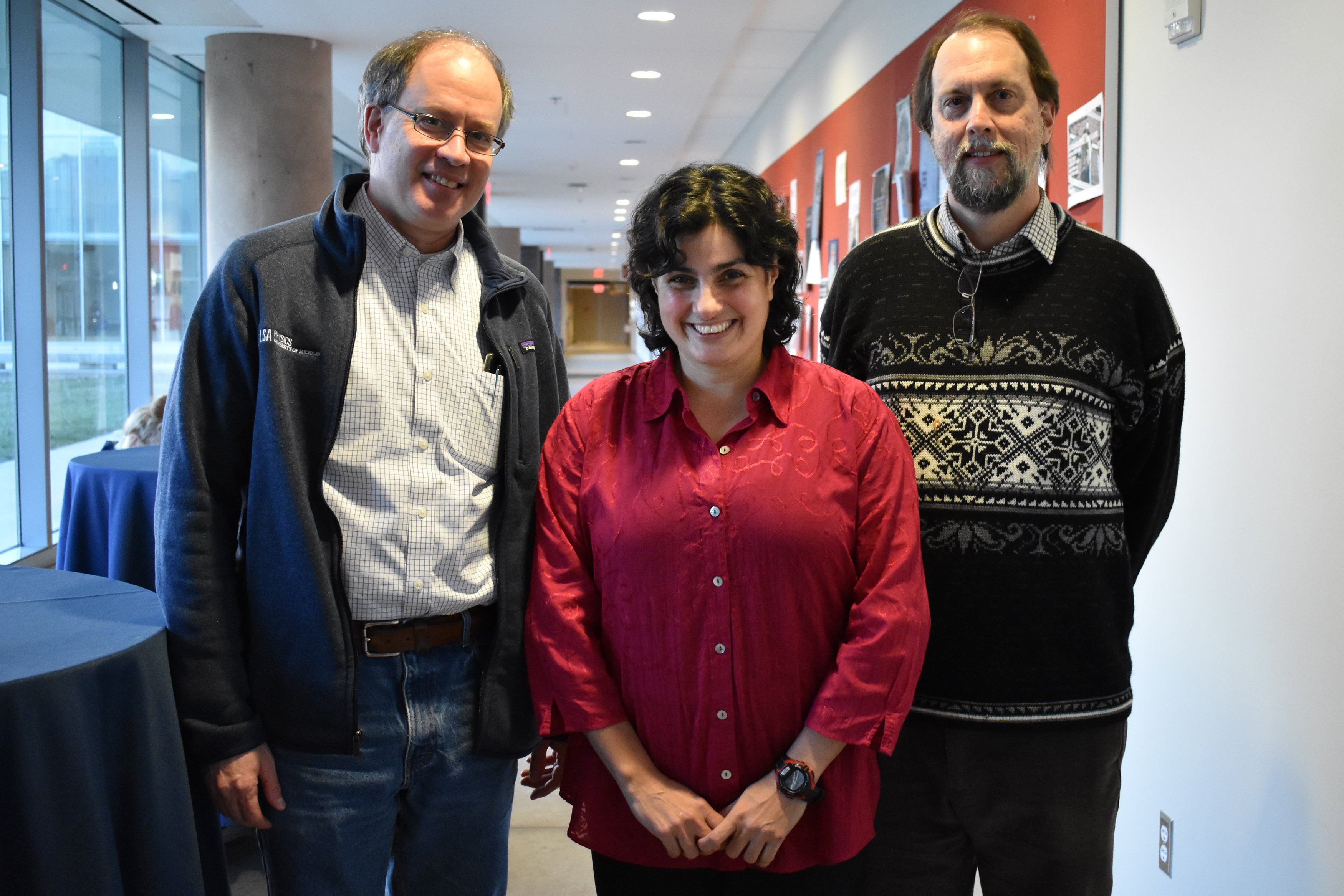A world-shaking discovery 100 years in the making
Prof. Nergis Mavalvala detailed the history and science behind the discovery of gravitational waves as the inaugural recipient of the M. Alten Gilleo Distinguished Lectureship
A massive star goes supernova. Electromagnetic radiation and matter explode into a dazzling nebula. The star’s core collapses. One of the most famous objects in the universe forms: a black hole.
The formation of a black hole is one of the most spectacularly violent events in the cosmos. A black hole is a region of space with an exceptionally powerful gravitational field where not even light can escape. When two black holes orbit each other, the result sends literal shockwaves, known as “gravitational waves,” throughout the universe. But it was the recent detection of these gravitational waves that has ushered in a new era of astrophysics.

 Enlarge
Enlarge
Nergis Mavalvala, the Curtis and Kathleen Marble Professor of Astrophysics and Assoc. Dept. Head of Physics at MIT, came to campus on December 4th as the inaugural speaker for the M. Alten Gilleo Distinguished Lectureship in Optical Sciences and Optoelectronics. In front of a nearly-full house in Penny Stamps Auditorium, Mavalvala spoke about the history and importance of gravitational waves and how their detection has changed the future of astrophysics forever.
Mavalvala is a leading figure in the scientific team that announced in early 2016 the first direct detection of gravitational waves from colliding black holes using the Laser Interferometer Gravitational-wave Observatory (LIGO) detectors.
Gravitational waves are ripples of spacetime that travel at the speed of light, which stretch and compress spacetime itself. But they don’t warp spacetime by much.
“If a gravitational wave were to pass through me,” Mavalvala explained, “it would change my height by one millionth the size of a single proton.”

 Enlarge
Enlarge
Albert Einstein predicated both the existence and behavior of gravitational waves in the early 20th century, but it took nearly 90 years to find the first exact solutions to his equation. In the 1960s, Prof. Rainer Weiss from MIT designed the first instrument (using lasers) that could detect gravitational waves. After decades of research and refinement, the LIGO detector was built, and its first recorded detection of gravitational waves from colliding black holes occurred on September 14th, 2015.
The collision of neutron stars – the densest known celestial objects – also generates gravitational waves. On August 17th, 2017, LIGO detected its first neutron star collision, and sent out an alert to observatories around the world.
“What followed is what I like to call an astronomer or astrophysicist’s night to remember,” Mavalvala said. “That was the first time we were able to observe light and gravity together from the same object.”
The observation of these events – made possible by LIGO’s detection of gravitational waves – has allowed for greater discovery of how our universe works and has helped solve decades-long mysteries.
For the first time, we’ve opened a completely new way in which to observe the universe.
Prof. Nergis Mavalvala
“The importance of this moment is that, for the first time, we’ve opened a completely new way in which to observe the universe,” Mavalvala said. “For the first, we can use gravity alone or with light as a new tool for discovery.”
In addition to her work on developing technologies for gravitational wave detectors since her graduate student years in the 1990s, Mavalvala has also conducted pioneering experiments to generate exotic quantum states of light and to optically cool and trap mirrors to enable observation of quantum effects that are usually manifested in the microscopic world in human-scale objects.
She is the recipient of numerous awards and honors, including a MacArthur Fellowship in 2010 and election to the National Academy of Sciences in 2017. Mavalvala earned a BA in physics and astronomy from Wellesley College and a PhD in physics from MIT.
About the M. Alten Gilleo Distinguished Lectureship in Optical Sciences and Optoelectronics

 Enlarge
Enlarge
The M. Alten Gilleo Distinguished Lectureship in Optical Sciences and Optoelectronics brings the world’s top researchers in the field of optics and optoelectronics to Michigan. The Lectureship was established by Anita Gilleo (BS Lit ‘44) in honor of her brother, Mathias Alten Gilleo (BSE EE ‘44). Alten Gilleo made significant contributions to optics and solid state physics throughout his career, and worked in some of the most advanced research labs of his time.
 MENU
MENU 
